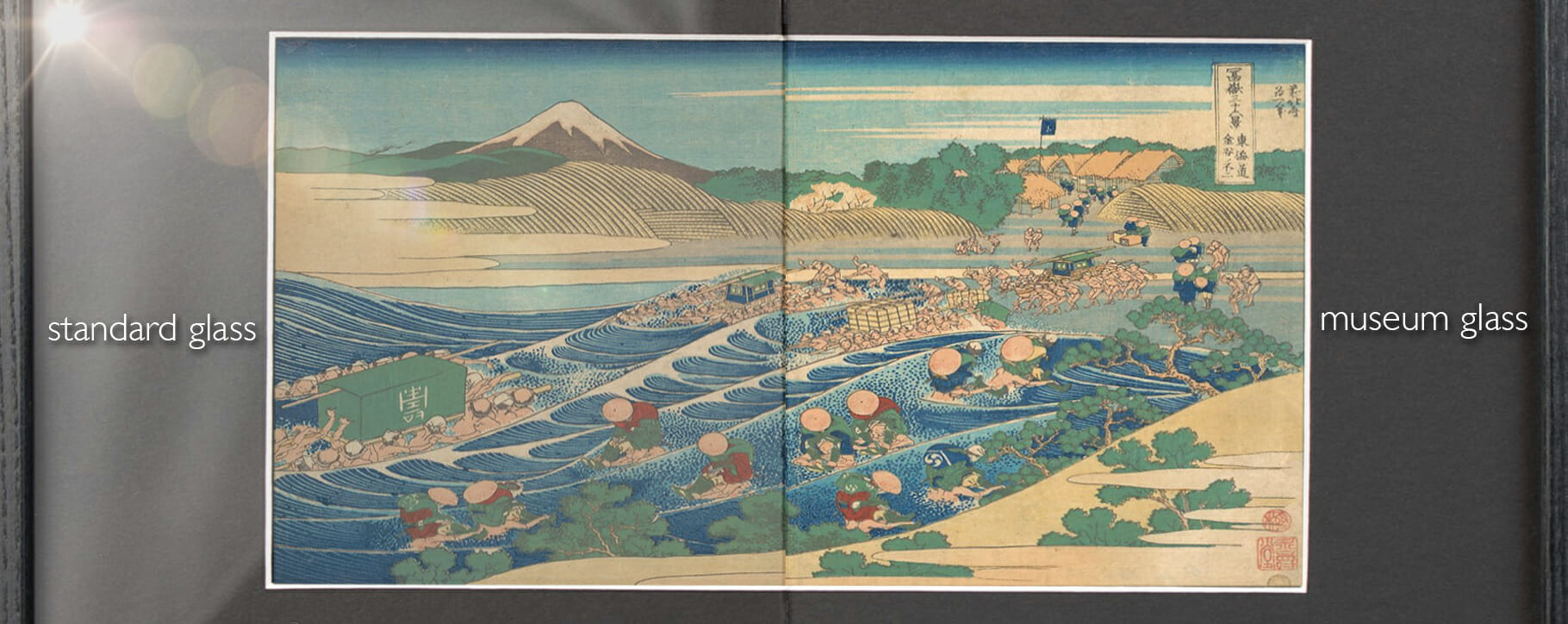How do you protect artwork from sunlight? It depends on the type of artwork and how well this might withstand bright conditions.
As a rule, direct sunlight should be avoided, but extra steps can be taken to avoid ultraviolet radiation from the sun. Ultraviolet rays are responsible for damage to treasured paintings when they are left exposed. Commonly referred to as UV rays, these can be avoided with UV proof glass, UV filtering blinds and even UV film to place on your windows.

Exposure to light can cause chemical changes to come pigments, green tones which were historically laced with copper may turn brown and often a blue pigment will fade into a muted grey. If you see these changes occurring over time, your painting is almost certainly being affected by the light positioning in your home.
Oil paintings in sunlight
A little sunshine is not a major issue for most oil paintings, but a direct afternoon glare should be avoided. The heat and light can have a negative effect on the appearance and overall health of your artwork as the years go by.
Whilst the paint itself can sometimes be preserved under varnish, any exposed canvas can become damaged in sunlight, and so fragile pieces should be placed away from windows or put behind UV glass or the UV filtering options mentioned above.
Make sure that your oil painting avoids heat from the sun, they are best in environments where the temperature is around 16-26 degrees celsius. Also take into account the heat from any artificial light, as high wattage bulbs may produce a similar issue.
Paper artworks in sunlight
Avoid sunny spots for works on paper, such as watercolour paintings. As there is no thorough protection for these fragile works of art and they can fade quickly, sometimes to a point which may seem irreversible and require professional restoration.

UV glass can be placed on watercolour paintings to help preserve them, but should in this case still be placed away from any direct sunlight or rooms with an element of bright natural light.
Care should also be taken in making sure watercolour paintings are not in a humid location, a warm room with damp elements may encourage foxing and mould.
Acrylic paintings in sunlight
Similarly to oil paintings, acrylic paintings are durable but should avoid year-round sunshine. To avoid any fading, precautions should still be taken with UV proof glass and indirect natural lighting.
Heat should also be avoided, as not to disrupt the chemicals in the paint. Similarly to oil paintings, acrylics should also be kept at around 16-26 degrees celsius.
Panel paintings in sunlight
As you may notice with many other wooden elements in your home, temperature and humidity can severely affect the structure. Over time a consistent contracting and expanding of an oil on panel can be very problematic and lead to paint loss, so a cooler environment with a steady temperature is preferable for artwork on these surfaces.






